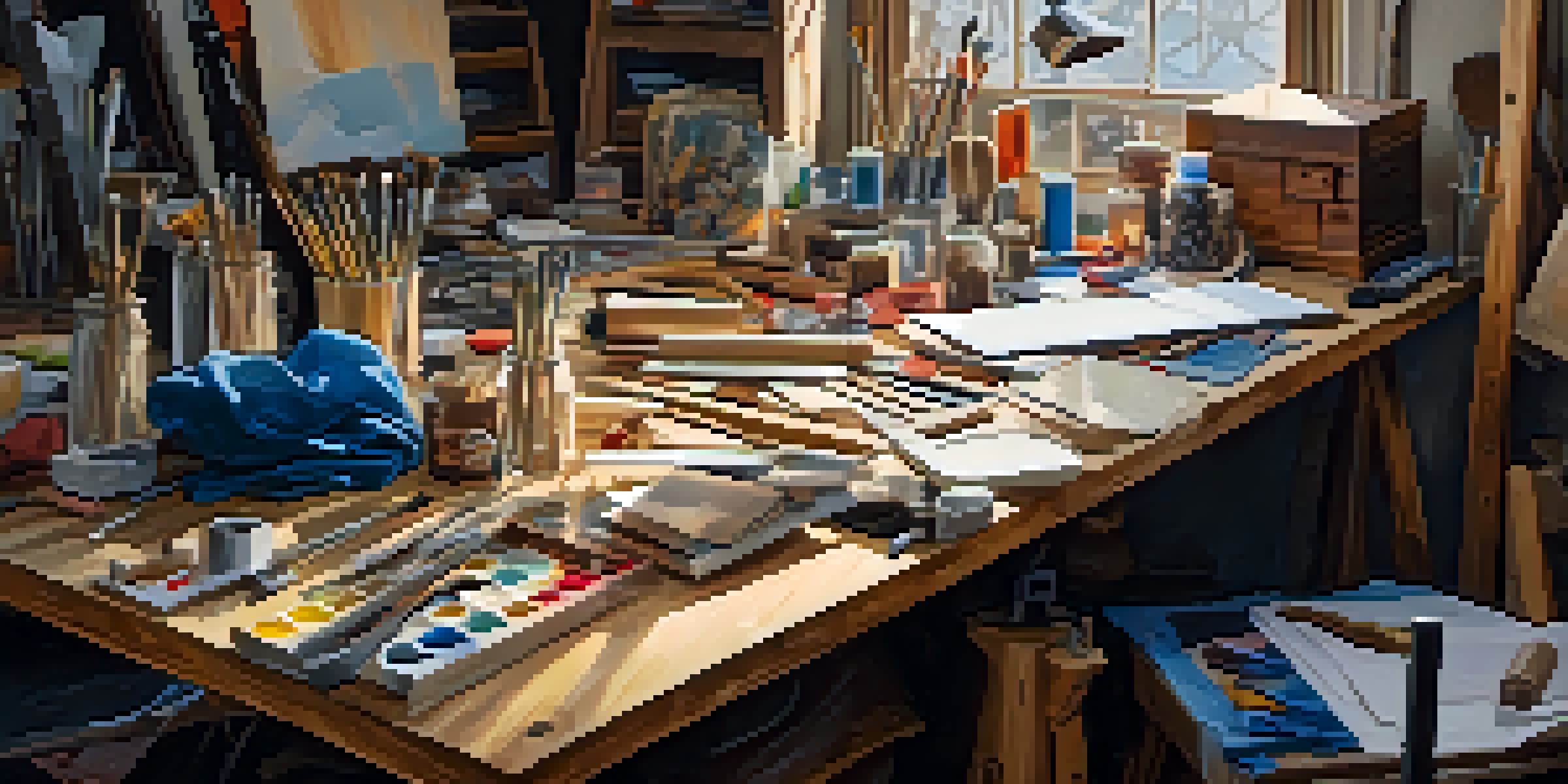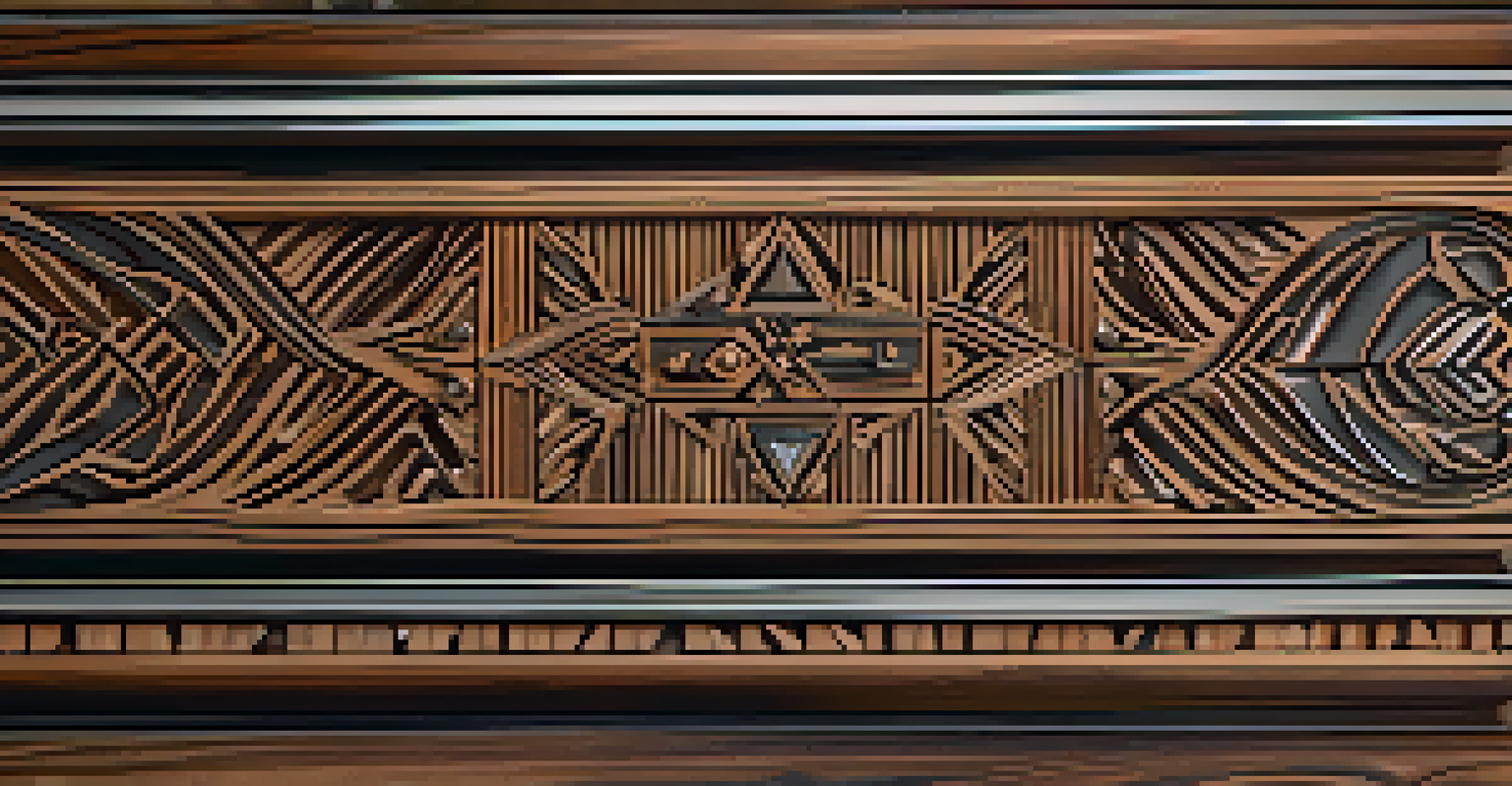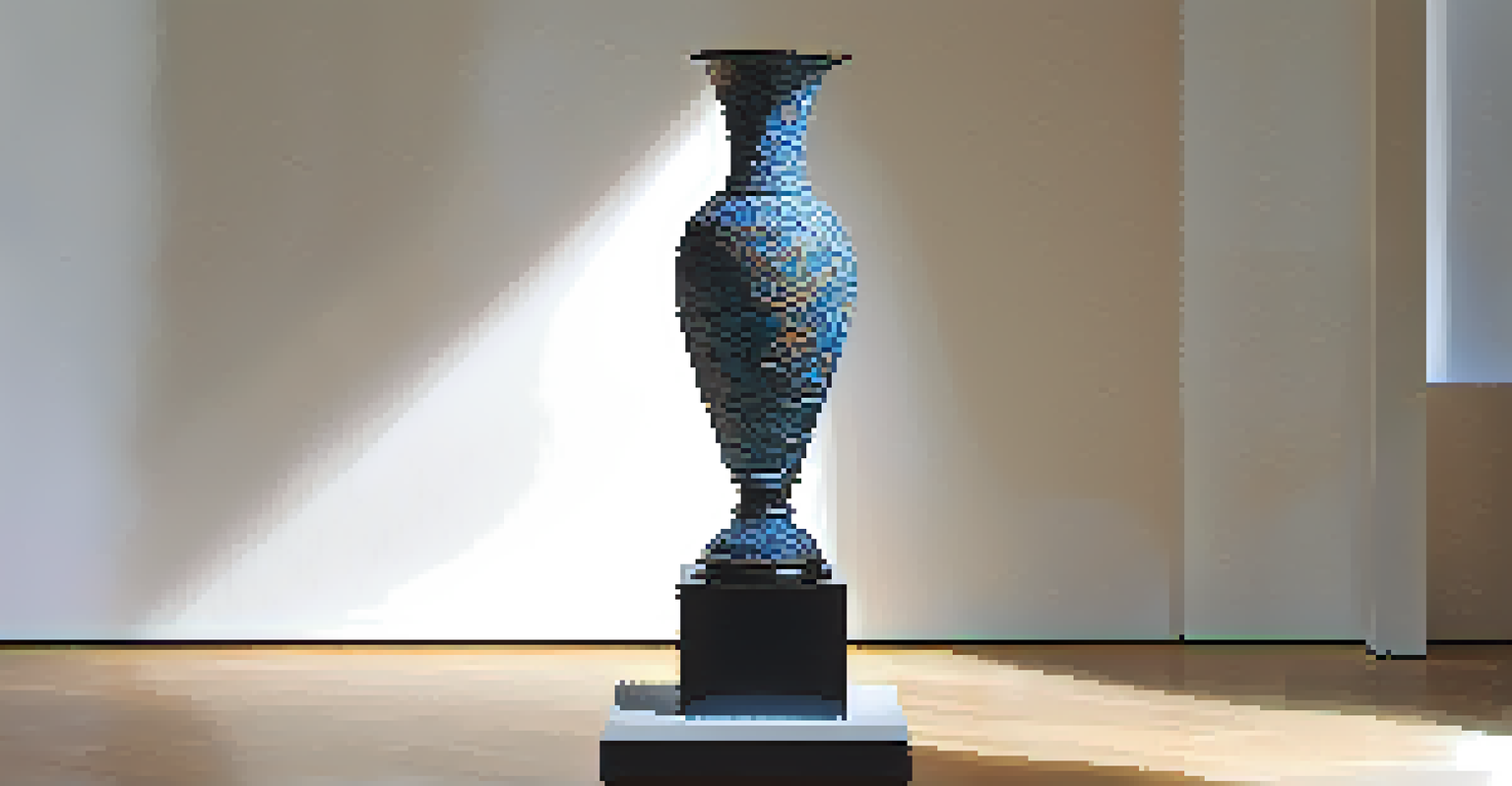Integrating Mixed Media in Experimental Carving Projects

Understanding Mixed Media in Carving
Mixed media refers to the combination of various materials and techniques in a single artwork. In the context of carving, this can mean using wood, stone, metal, and even recycled materials to create unique pieces. This approach not only enhances the visual appeal but also adds depth to the narrative of the artwork.
Art is not what you see, but what you make others see.
For example, a wood carving can be beautifully complemented by incorporating metal accents or fabric elements. This fusion can create a striking contrast and provoke thought about the relationship between the materials. By experimenting with different media, artists can push the boundaries of traditional carving and explore new artistic expressions.
Ultimately, mixed media carving invites artists to think outside the box. It encourages creativity and innovation, allowing for endless possibilities in design and execution. This kind of experimentation can lead to truly original pieces that resonate with viewers on multiple levels.
Choosing the Right Materials for Your Project
The selection of materials is crucial when integrating mixed media into carving projects. Each material has its own texture, weight, and aesthetic, which can significantly impact the final piece. For instance, pairing soft woods with harder metals can create a dynamic contrast that draws the eye.

Consider your project’s theme and message when selecting materials. For instance, if you’re conveying a sense of nature, incorporating organic materials like bark or stones alongside wood could enhance that narrative. The interplay of materials can evoke emotions and tell stories that resonate with the audience.
Embrace Mixed Media Creativity
Mixed media carving allows artists to blend various materials, enhancing the visual appeal and narrative of their work.
Don’t be afraid to experiment with unconventional materials too! Items like glass, plastic, or even found objects can add unexpected elements to your carving. This adventurous spirit not only enriches your work but also encourages others to think creatively about what materials they can use.
Techniques for Combining Materials in Carving
Integrating mixed media in carving often requires a variety of techniques to ensure the materials bond effectively. Techniques like inlaying, where one material is set into another, can create stunning visual effects. This method allows for a seamless blend that appears cohesive while highlighting the unique qualities of each material.
Creativity takes courage.
Another method is layering, where different materials are stacked to create depth. For example, a carved wooden base could be enhanced with layers of fabric or metal on top, adding richness to the piece. This not only adds visual interest but also invites viewers to explore the layers of your work more closely.
Additionally, consider the finishing techniques. Applying finishes that complement both materials can enhance their natural beauty. For instance, using a clear coat on wood with a matte finish on metal can create a beautiful contrast and highlight the unique textures of each material.
Incorporating Color and Texture in Your Carvings
Color and texture are key elements in mixed media carving projects. Utilizing paints, stains, or natural dyes can breathe life into your work, making it pop with vibrancy. Consider how color can evoke emotions or set a mood that aligns with the message of your piece.
Texture, on the other hand, adds tactile interest. Combining smooth and rough surfaces can create a dynamic experience for viewers. Imagine running your fingers over the polished wood, only to be surprised by the gritty feel of sandblasted metal; this contrast can be both engaging and thought-provoking.
Choose Materials Wisely
Selecting the right materials is crucial for conveying themes and emotions in mixed media carving projects.
Incorporating texture and color can also help to unify disparate materials. Use a consistent color palette or similar textures across different elements to create harmony in your piece. This thoughtful approach ensures that while each material is distinct, they work together to form a cohesive work of art.
Finding Inspiration for Mixed Media Carving
Inspiration can come from a variety of sources when exploring mixed media carving. Nature, architecture, and even everyday objects can spark ideas for your projects. Take a walk outside and observe the diverse textures and colors in your surroundings; they can ignite your creativity and lead to innovative designs.
Art galleries and museums are also excellent places to find inspiration. Studying the works of other artists can reveal how they successfully integrated mixed media into their carvings. Pay attention to how they combine materials and techniques, and let that inform your own creative process.
Don’t forget about online platforms, like social media and art forums, where artists share their work. Engaging with a community of fellow creators can lead to new ideas and collaborations. Sharing your own projects can also invite feedback and spark conversations that inspire further experimentation.
Documenting Your Process and Progress
As you embark on mixed media carving projects, documenting your process is invaluable. Keeping a journal or blog can help you reflect on your techniques, challenges, and breakthroughs. This record not only serves as a personal reference but can also inspire others who are interested in similar artistic journeys.
Taking photos at various stages of your project can capture the evolution of your work. These images can serve as a visual diary, showcasing how your ideas transformed from concept to completion. Sharing these snapshots on social media can also engage your audience and invite feedback.
Document Your Artistic Journey
Keeping a record of your carving process through journaling or photography can inspire both personal reflection and community engagement.
Additionally, consider creating time-lapse videos of your carving process. These not only highlight your skills and techniques but also provide an exciting glimpse into the creation of your art. This kind of documentation can foster a deeper connection with your audience and encourage them to appreciate the effort behind mixed media carving.
Exhibiting and Sharing Your Mixed Media Art
Once you’ve completed your mixed media carving, it’s time to think about how to showcase your work. Local galleries or art fairs can be excellent platforms to exhibit your pieces. Sharing your art with the community not only promotes your work but also connects you with other artists and enthusiasts.
Online platforms, such as personal websites or social media, offer additional avenues for exposure. Sharing high-quality images of your work, along with the stories behind them, can help build a following. Engaging with your audience through comments and discussions can create a sense of community around your art.

Consider participating in collaborative projects or workshops as well. These opportunities allow you to connect with like-minded artists, share techniques, and even inspire new ideas. By sharing your mixed media carvings, you contribute to a larger dialogue about art and creativity, enriching both your practice and the community at large.